-
 Bitcoin
Bitcoin $116400
-0.36% -
 Ethereum
Ethereum $4033
3.40% -
 XRP
XRP $3.302
-1.26% -
 Tether USDt
Tether USDt $1.000
-0.02% -
 BNB
BNB $796.1
1.67% -
 Solana
Solana $177.8
1.89% -
 USDC
USDC $0.9999
0.00% -
 Dogecoin
Dogecoin $0.2314
4.09% -
 TRON
TRON $0.3381
0.14% -
 Cardano
Cardano $0.7989
1.22% -
 Stellar
Stellar $0.4496
-1.84% -
 Chainlink
Chainlink $20.42
9.42% -
 Hyperliquid
Hyperliquid $41.17
0.88% -
 Sui
Sui $3.914
3.77% -
 Bitcoin Cash
Bitcoin Cash $584.7
1.52% -
 Hedera
Hedera $0.2632
-0.54% -
 Avalanche
Avalanche $24.09
3.40% -
 Ethena USDe
Ethena USDe $1.001
-0.02% -
 Litecoin
Litecoin $123.2
1.33% -
 Toncoin
Toncoin $3.318
-0.04% -
 UNUS SED LEO
UNUS SED LEO $8.984
-0.05% -
 Shiba Inu
Shiba Inu $0.00001323
2.85% -
 Uniswap
Uniswap $10.90
4.41% -
 Polkadot
Polkadot $3.999
3.34% -
 Dai
Dai $1.000
0.01% -
 Cronos
Cronos $0.1630
9.64% -
 Bitget Token
Bitget Token $4.484
0.82% -
 Monero
Monero $272.4
2.44% -
 Pepe
Pepe $0.00001173
6.03% -
 Aave
Aave $290.8
2.88%
How to find a callback buying point in the moving average bullish arrangement?
To find callback buying points in crypto trading, monitor price dips within bullish trends, ensuring they don't break key moving averages like the 200-day, and use RSI and MACD for confirmation.
Jun 02, 2025 at 03:08 pm
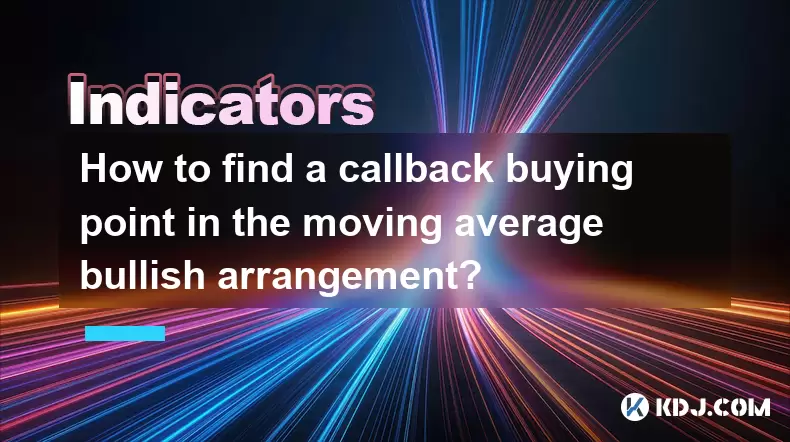
In the world of cryptocurrency trading, understanding how to identify a callback buying point within a moving average bullish arrangement can significantly enhance your trading strategy. A callback refers to a temporary price decline within an overall upward trend, and moving averages are essential tools used to smooth out price data and identify trends. This article will guide you through the process of finding these buying points, ensuring you have a solid grasp of the concepts and the practical steps involved.
Understanding Moving Averages and Bullish Arrangements
Before diving into the specifics of callback buying points, it's crucial to understand the basics of moving averages and what constitutes a bullish arrangement. Moving averages are calculated by taking the average price of a cryptocurrency over a specific period. Commonly used periods include 50-day, 100-day, and 200-day moving averages. A bullish arrangement occurs when shorter-term moving averages (like the 50-day) are above longer-term moving averages (like the 200-day), indicating a strong upward trend.
To identify a bullish arrangement, you should:
- Plot the 50-day, 100-day, and 200-day moving averages on your chart.
- Observe if the 50-day moving average is consistently above the 100-day and 200-day moving averages.
- Confirm that the price action remains above these moving averages, signaling a bullish trend.
Identifying a Callback
A callback is a normal part of any upward trend, providing potential buying opportunities. To identify a callback, you need to look for a temporary dip in the price within the context of an ongoing bullish trend. Key indicators of a callback include:
- A price drop that does not break below the longer-term moving averages (e.g., the 200-day).
- The price action should show signs of stabilization or a potential reversal after the dip.
Steps to Find a Callback Buying Point
Finding the optimal buying point during a callback requires a combination of technical analysis and patience. Here are the detailed steps you should follow:
- Monitor the Price Action: Keep a close eye on the price movements. When you notice a dip, check if it aligns with a callback pattern.
- Check Moving Averages: Ensure the price dip does not break below the 200-day moving average. This is a crucial step to confirm that the overall bullish trend remains intact.
- Look for Support Levels: Identify key support levels where the price might stabilize. These can be previous lows, trend lines, or Fibonacci retracement levels.
- Wait for Confirmation: Do not rush into a trade. Wait for signs of a potential reversal, such as a bullish candlestick pattern or a bounce off a support level.
- Enter the Trade: Once you have confirmation of a reversal, you can enter the trade. Set your stop-loss just below the recent low to manage risk.
Using Technical Indicators to Confirm a Callback Buying Point
Technical indicators can provide additional confirmation of a callback buying point. Some of the most effective indicators include:
- Relative Strength Index (RSI): The RSI can help identify overbought or oversold conditions. A reading below 30 may indicate an oversold condition, suggesting a potential buying opportunity.
- MACD (Moving Average Convergence Divergence): The MACD can signal potential reversals. A bullish crossover (when the MACD line crosses above the signal line) can confirm a buying opportunity.
- Volume: An increase in volume during the price dip and subsequent recovery can indicate strong buying interest, supporting the validity of the callback buying point.
To incorporate these indicators into your analysis:
- Plot the RSI on your chart and look for readings below 30 during the callback.
- Add the MACD and watch for bullish crossovers.
- Monitor the volume during the price movements to gauge market interest.
Practical Example of a Callback Buying Point
Let's walk through a practical example to illustrate how to find a callback buying point in a moving average bullish arrangement.
- Scenario: You are monitoring Bitcoin (BTC) and notice that the 50-day moving average is above the 100-day and 200-day moving averages, indicating a bullish trend.
- Callback Identification: You observe a price drop in BTC, but the price remains above the 200-day moving average.
- Support Levels: You identify a key support level at $30,000, which aligns with a previous low.
- Confirmation: The RSI drops to 28, indicating an oversold condition. Additionally, the MACD shows a bullish crossover, and volume increases during the price recovery.
- Trade Entry: You enter a long position on BTC at $30,500, setting a stop-loss at $29,500.
Managing Risk and Setting Targets
Once you have entered a trade based on a callback buying point, it's essential to manage your risk and set realistic targets. Here are some tips:
- Stop-Loss: Always set a stop-loss order to limit potential losses. Place it just below the recent low or the support level you identified.
- Take-Profit: Set a take-profit level based on resistance levels or Fibonacci extensions. A common approach is to aim for the previous high or a significant resistance level.
- Trailing Stop: Consider using a trailing stop to lock in profits as the price moves in your favor.
Frequently Asked Questions
Q1: How can I differentiate between a callback and a trend reversal?
A: A callback is characterized by a temporary price dip within an ongoing bullish trend, where the price does not break below key moving averages like the 200-day. In contrast, a trend reversal involves a more sustained price decline, often breaking below these key moving averages and showing signs of a shift in market sentiment.
Q2: Are there any specific cryptocurrencies that are more suitable for using moving average strategies?
A: Moving average strategies can be applied to any cryptocurrency with sufficient liquidity and trading volume. However, major cryptocurrencies like Bitcoin and Ethereum tend to have more reliable price data and trends, making them suitable for such strategies.
Q3: Can I use moving averages with shorter time frames for intraday trading?
A: Yes, you can use shorter-term moving averages, such as the 10-day or 20-day, for intraday trading. However, keep in mind that shorter time frames can be more volatile, and you may need to adjust your strategy to account for increased noise in the price data.
Q4: How do I know if a callback buying point is a false signal?
A: False signals can occur, so it's important to use multiple indicators for confirmation. Look for signs of a strong reversal, such as increased volume, bullish candlestick patterns, and supportive technical indicators like RSI and MACD. If the price fails to hold above key support levels or breaks below the 200-day moving average, it may be a false signal.
Disclaimer:info@kdj.com
The information provided is not trading advice. kdj.com does not assume any responsibility for any investments made based on the information provided in this article. Cryptocurrencies are highly volatile and it is highly recommended that you invest with caution after thorough research!
If you believe that the content used on this website infringes your copyright, please contact us immediately (info@kdj.com) and we will delete it promptly.
- SHIB Price, Meme Coin Mania, and the 250x Potential Hunt
- 2025-08-09 16:30:13
- SOL, ETFs, and AI: Crypto's Triple Threat Sensation!
- 2025-08-09 17:10:12
- Tokenized Stock on Solana: SOL Price Reacts to Exodus's Bold Move
- 2025-08-09 17:10:12
- Meme Coins on Blockchains in 2025: Hype or the Future?
- 2025-08-09 16:50:11
- World Liberty Financial, Public Listing, and WLFI Tokens: A New York Minute on the Trump-Backed Crypto Venture
- 2025-08-09 16:50:11
- Holy Grail Coin Hunting: Rare Errors and Value Increases You Need to Know!
- 2025-08-09 16:30:13
Related knowledge

What does it mean when the Triple Moving Average (TRIX) turns downward but the price doesn't fall?
Aug 09,2025 at 12:42pm
Understanding the Triple Moving Average (TRIX) IndicatorThe Triple Moving Average, commonly known as TRIX, is a momentum oscillator designed to filter...

What does it mean when the Williams' oscillator repeatedly hits bottoms but fails to rebound?
Aug 09,2025 at 09:28am
Understanding the Williams %R OscillatorThe Williams %R oscillator, developed by Larry Williams, is a momentum indicator used in technical analysis to...
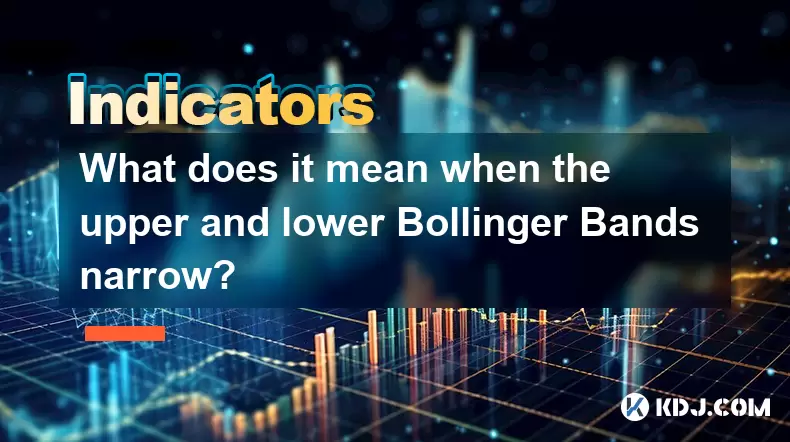
What does it mean when the upper and lower Bollinger Bands narrow?
Aug 09,2025 at 03:00pm
Understanding Bollinger Bands in Cryptocurrency TradingBollinger Bands are a widely used technical analysis tool in the cryptocurrency market, develop...
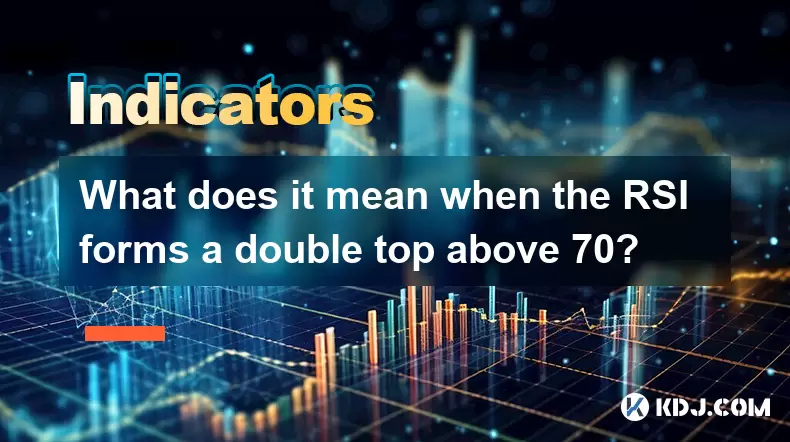
What does it mean when the RSI forms a double top above 70?
Aug 09,2025 at 05:50pm
Understanding the RSI and Overbought ConditionsThe Relative Strength Index (RSI) is a momentum oscillator that measures the speed and change of price ...
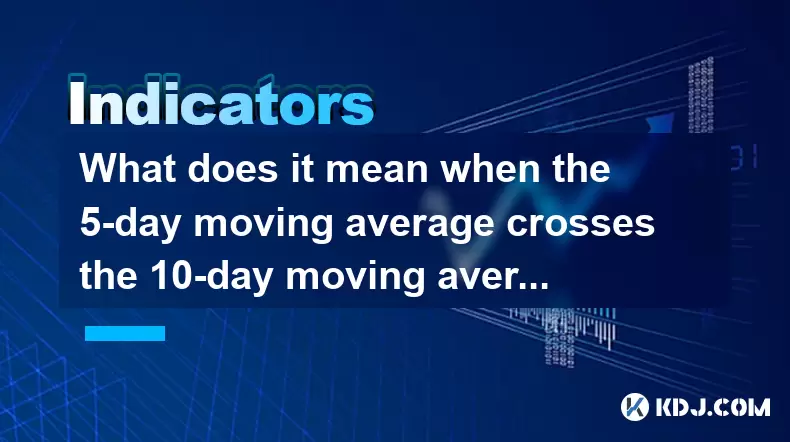
What does it mean when the 5-day moving average crosses the 10-day moving average but the 20-day moving average remains upward?
Aug 09,2025 at 03:35pm
Understanding Moving Averages in Cryptocurrency TradingMoving averages are foundational tools in technical analysis, especially within the cryptocurre...
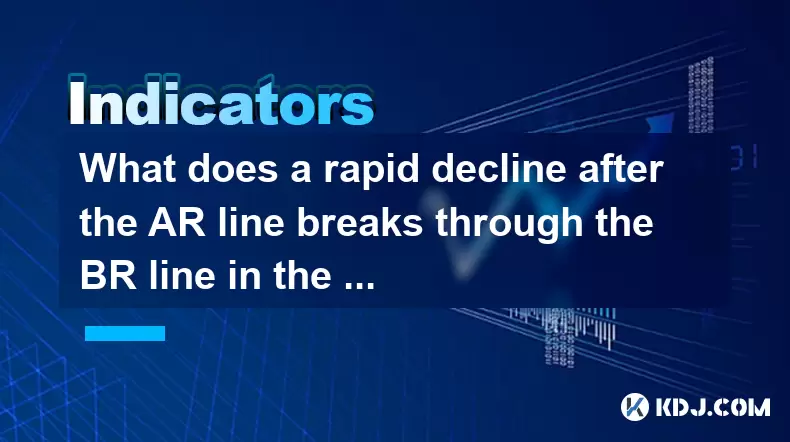
What does a rapid decline after the AR line breaks through the BR line in the ARBR indicator indicate?
Aug 09,2025 at 04:42pm
Understanding the ARBR Indicator ComponentsThe ARBR indicator is a technical analysis tool that combines two oscillators: the AR (Amplitude Ratio) and...

What does it mean when the Triple Moving Average (TRIX) turns downward but the price doesn't fall?
Aug 09,2025 at 12:42pm
Understanding the Triple Moving Average (TRIX) IndicatorThe Triple Moving Average, commonly known as TRIX, is a momentum oscillator designed to filter...

What does it mean when the Williams' oscillator repeatedly hits bottoms but fails to rebound?
Aug 09,2025 at 09:28am
Understanding the Williams %R OscillatorThe Williams %R oscillator, developed by Larry Williams, is a momentum indicator used in technical analysis to...

What does it mean when the upper and lower Bollinger Bands narrow?
Aug 09,2025 at 03:00pm
Understanding Bollinger Bands in Cryptocurrency TradingBollinger Bands are a widely used technical analysis tool in the cryptocurrency market, develop...

What does it mean when the RSI forms a double top above 70?
Aug 09,2025 at 05:50pm
Understanding the RSI and Overbought ConditionsThe Relative Strength Index (RSI) is a momentum oscillator that measures the speed and change of price ...

What does it mean when the 5-day moving average crosses the 10-day moving average but the 20-day moving average remains upward?
Aug 09,2025 at 03:35pm
Understanding Moving Averages in Cryptocurrency TradingMoving averages are foundational tools in technical analysis, especially within the cryptocurre...

What does a rapid decline after the AR line breaks through the BR line in the ARBR indicator indicate?
Aug 09,2025 at 04:42pm
Understanding the ARBR Indicator ComponentsThe ARBR indicator is a technical analysis tool that combines two oscillators: the AR (Amplitude Ratio) and...
See all articles

























































































